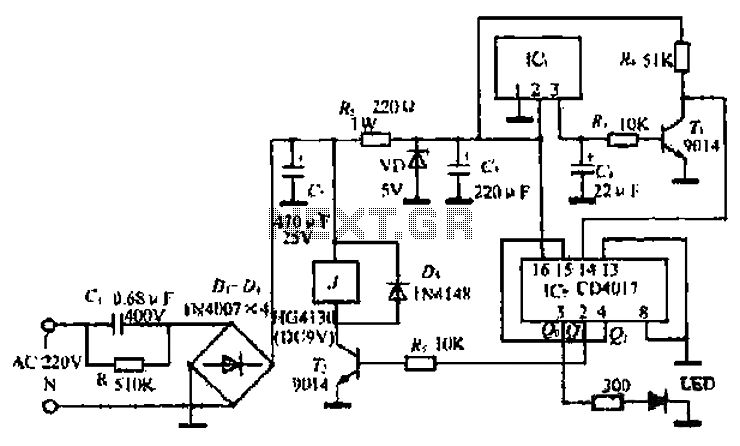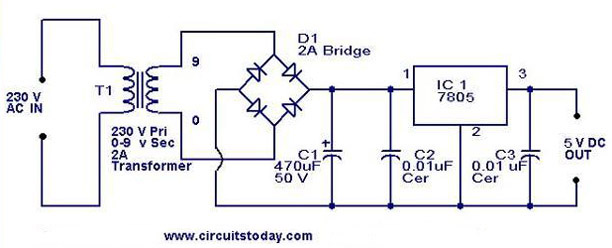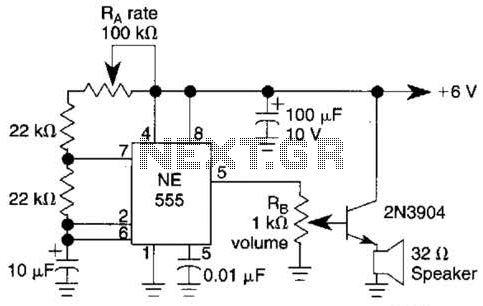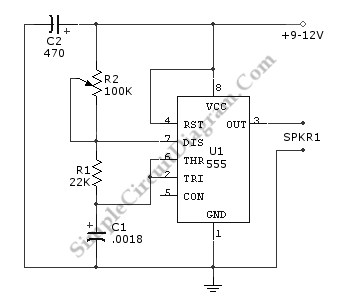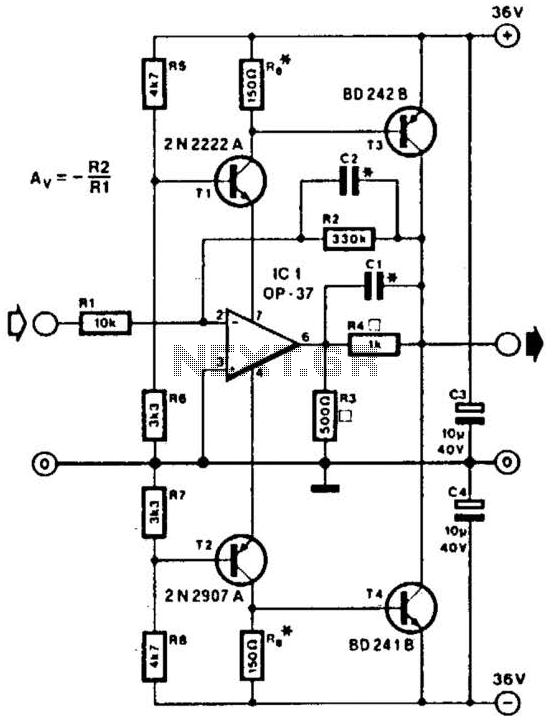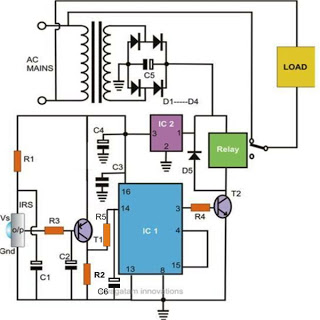
Precision Audio-Frequency Generator Circuit
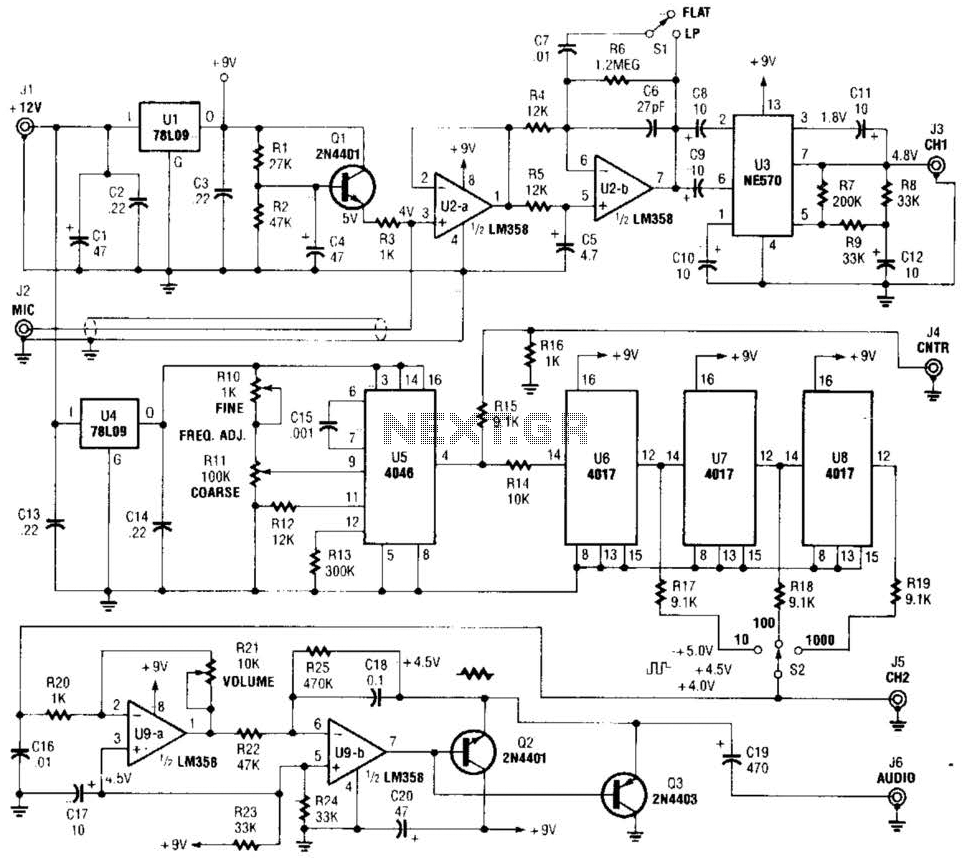
The precision audio frequency generator consists of several sub-circuits: an audio amplifier/filter circuit, an automatic level control, a variable voltage-controlled oscillator, a frequency divider circuit, an integrator, and an audio output amplifier. An electret microphone element is utilized to capture the audio tone produced by the instrument. This signal is then directed to an amplifier/filter/level-controlled circuit and output through channel 1 (CHI) to an oscilloscope for visualization. The variable voltage-controlled oscillator (VCO) generates a signal ranging from less than 10 kHz to more than 99 kHz. The VCO output is sent to a digital frequency counter for display and is also routed through a series of frequency dividers, where the signal is divided by factors of 10, 100, or 1,000 based on the setting of a selector switch.
From there, the selected signal frequency is split into two paths; one path leads to CH2 (which connects to the oscilloscope's sweep synchronization input) and to an integrator that transforms the square-wave output of the divider into a triangular waveform. The output from the integrator is subsequently amplified and delivered to a set of stereo headphones via an audio output jack. One segment of the precision audio frequency generator employs an electret microphone element to capture audio from a piano. This signal is processed and sent to one channel of a dual-trace oscilloscope. The other segment of the circuit generates a variable-frequency signal that is directed to a digital frequency counter and, after conditioning, is presented to the second channel of the oscilloscope and output to a set of stereo headphones.
The precision audio frequency generator is designed to provide accurate and versatile audio signal generation and analysis. The audio amplifier/filter circuit serves to enhance the captured audio signal from the electret microphone while filtering out unwanted noise, ensuring that the output is clean and suitable for further processing. The automatic level control adjusts the gain of the audio signal dynamically, allowing for consistent output levels regardless of variations in the input signal amplitude.
The variable voltage-controlled oscillator is a critical component that allows for a wide range of frequency generation. This VCO can be finely tuned to produce specific audio frequencies, which is essential for applications in audio testing and synthesis. The digital frequency counter provides real-time frequency readouts, facilitating precise measurements and adjustments during operation.
The frequency divider circuit is equipped with a selector switch that enables the user to choose the division factor, thereby allowing for flexibility in frequency output. This feature is particularly useful when synchronizing signals with external equipment or when specific frequency ranges are required for testing.
The integrator plays a vital role in converting the square wave output from the frequency divider into a triangular waveform, which is often more suitable for audio applications and provides a smoother sound output when amplified. The output from the integrator is then amplified further to ensure adequate signal strength before being delivered to the headphones.
Overall, the precision audio frequency generator is a sophisticated device that integrates various electronic components to facilitate comprehensive audio signal generation, analysis, and output, making it an invaluable tool for audio engineers and technicians in various applications. The precision audio-frequency-generator consists of several sub circuitsan audio-amplifier/filter circuit, an automatic level control, a variable voltage-controlled oscillator, a frequency divider circuit, an integrator, and an audio output amplifier. An electret microphone element is used to pick up the audio tone produced by the instrument. That signal is then fed to an amplifier/filter/level-controlled circuit and output via channel 1 (CHI) to an oscilloscope for display.
The variable voltage-controlled oscillator (VCO) is used to produce a signal of from less than 10 kHz to more than 99 kHz. The VCO output is fed to a digital frequency counter for display, and is also routed to a chain of frequency dividers, where the signal is divided by 10, 100, or 1,000, depending on the setting of a selector switch.
From there, the selected signal frequency divides along two paths; one going to CH2 (which feeds the oscilloscope`s sweep synchronization input) and to an integrator that converts the square-wave output of the divider into a triangular waveform. The output of the integrator is then amplified and fed to a set of stereo headphones via an audio output jack.
One section of the precision audio-frequency generator uses an electret microphone element to pick up audio from the piano. That signal is then processed and sent to one channel of a dual-trace oscilloscope. The other section of the circuit is used to produce a variable-frequency signal that is fed to a digital frequency counter and, after conditioning, is presented to the second channel of the scope and output to a set of stereo headphones.
From there, the selected signal frequency is split into two paths; one path leads to CH2 (which connects to the oscilloscope's sweep synchronization input) and to an integrator that transforms the square-wave output of the divider into a triangular waveform. The output from the integrator is subsequently amplified and delivered to a set of stereo headphones via an audio output jack. One segment of the precision audio frequency generator employs an electret microphone element to capture audio from a piano. This signal is processed and sent to one channel of a dual-trace oscilloscope. The other segment of the circuit generates a variable-frequency signal that is directed to a digital frequency counter and, after conditioning, is presented to the second channel of the oscilloscope and output to a set of stereo headphones.
The precision audio frequency generator is designed to provide accurate and versatile audio signal generation and analysis. The audio amplifier/filter circuit serves to enhance the captured audio signal from the electret microphone while filtering out unwanted noise, ensuring that the output is clean and suitable for further processing. The automatic level control adjusts the gain of the audio signal dynamically, allowing for consistent output levels regardless of variations in the input signal amplitude.
The variable voltage-controlled oscillator is a critical component that allows for a wide range of frequency generation. This VCO can be finely tuned to produce specific audio frequencies, which is essential for applications in audio testing and synthesis. The digital frequency counter provides real-time frequency readouts, facilitating precise measurements and adjustments during operation.
The frequency divider circuit is equipped with a selector switch that enables the user to choose the division factor, thereby allowing for flexibility in frequency output. This feature is particularly useful when synchronizing signals with external equipment or when specific frequency ranges are required for testing.
The integrator plays a vital role in converting the square wave output from the frequency divider into a triangular waveform, which is often more suitable for audio applications and provides a smoother sound output when amplified. The output from the integrator is then amplified further to ensure adequate signal strength before being delivered to the headphones.
Overall, the precision audio frequency generator is a sophisticated device that integrates various electronic components to facilitate comprehensive audio signal generation, analysis, and output, making it an invaluable tool for audio engineers and technicians in various applications. The precision audio-frequency-generator consists of several sub circuitsan audio-amplifier/filter circuit, an automatic level control, a variable voltage-controlled oscillator, a frequency divider circuit, an integrator, and an audio output amplifier. An electret microphone element is used to pick up the audio tone produced by the instrument. That signal is then fed to an amplifier/filter/level-controlled circuit and output via channel 1 (CHI) to an oscilloscope for display.
The variable voltage-controlled oscillator (VCO) is used to produce a signal of from less than 10 kHz to more than 99 kHz. The VCO output is fed to a digital frequency counter for display, and is also routed to a chain of frequency dividers, where the signal is divided by 10, 100, or 1,000, depending on the setting of a selector switch.
From there, the selected signal frequency divides along two paths; one going to CH2 (which feeds the oscilloscope`s sweep synchronization input) and to an integrator that converts the square-wave output of the divider into a triangular waveform. The output of the integrator is then amplified and fed to a set of stereo headphones via an audio output jack.
One section of the precision audio-frequency generator uses an electret microphone element to pick up audio from the piano. That signal is then processed and sent to one channel of a dual-trace oscilloscope. The other section of the circuit is used to produce a variable-frequency signal that is fed to a digital frequency counter and, after conditioning, is presented to the second channel of the scope and output to a set of stereo headphones.
